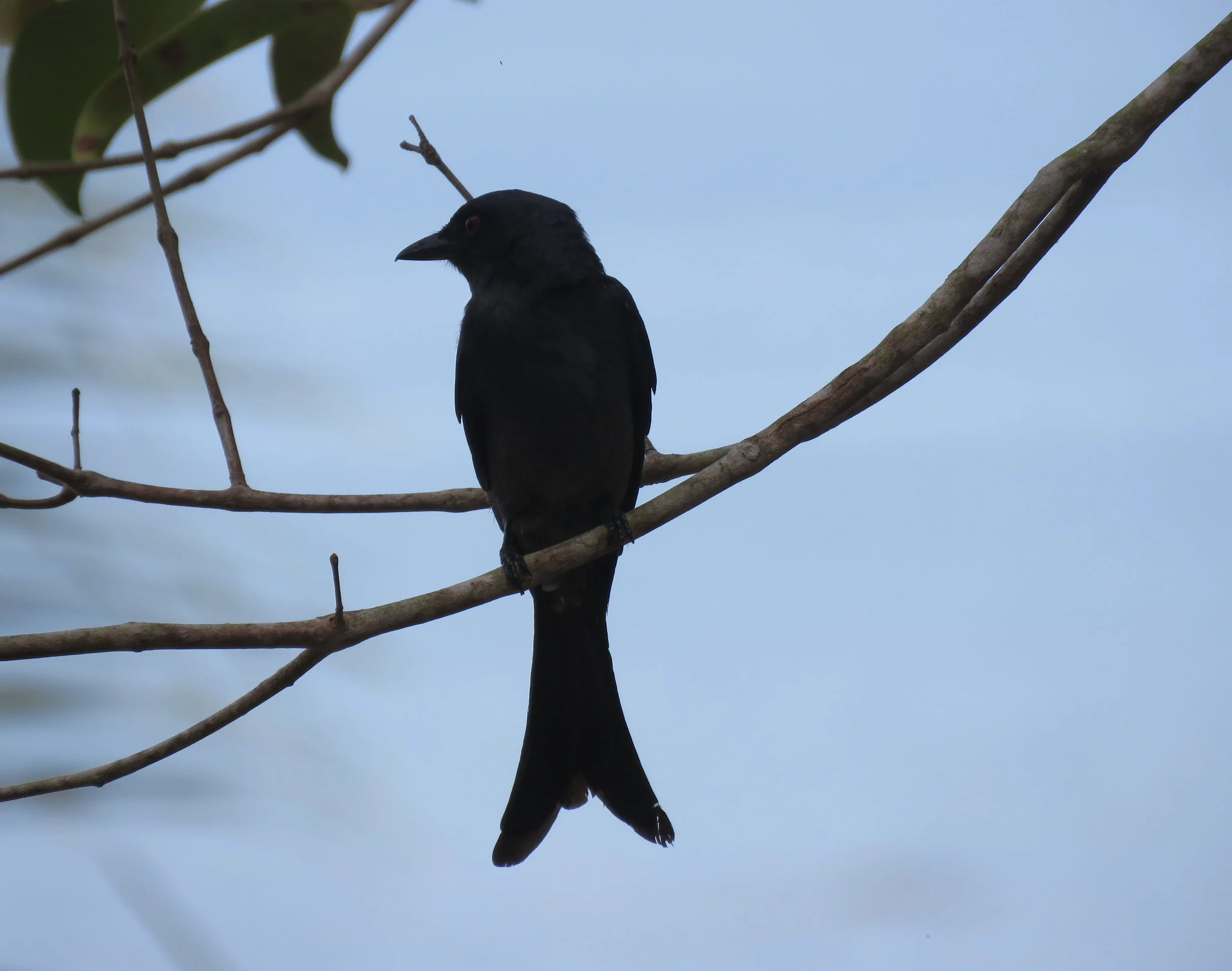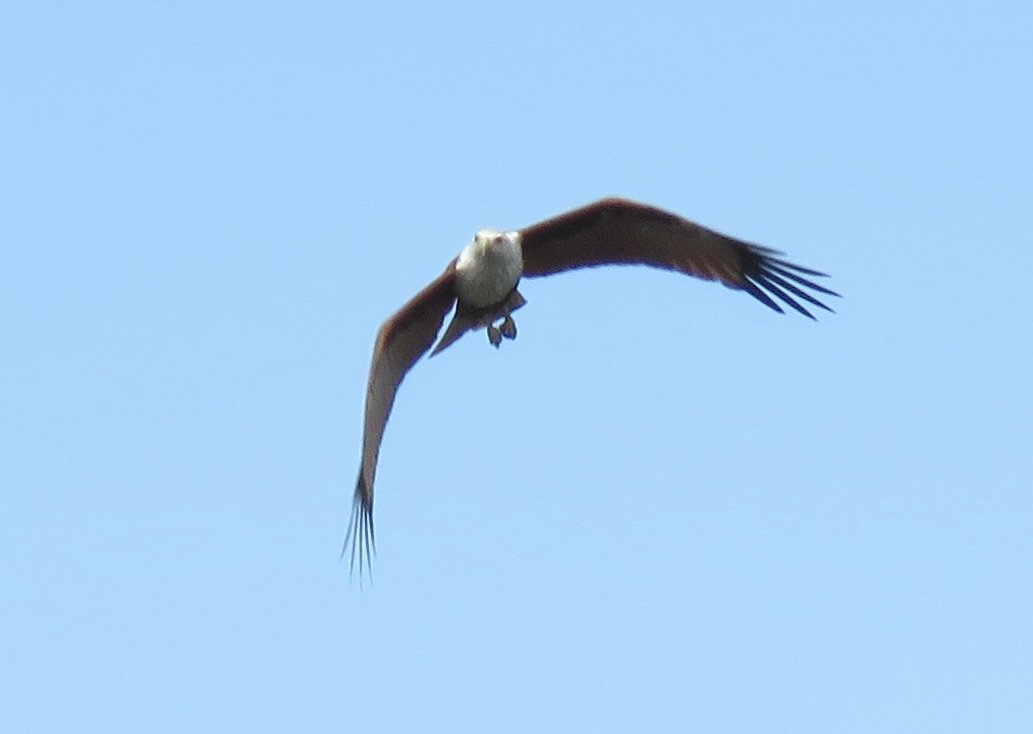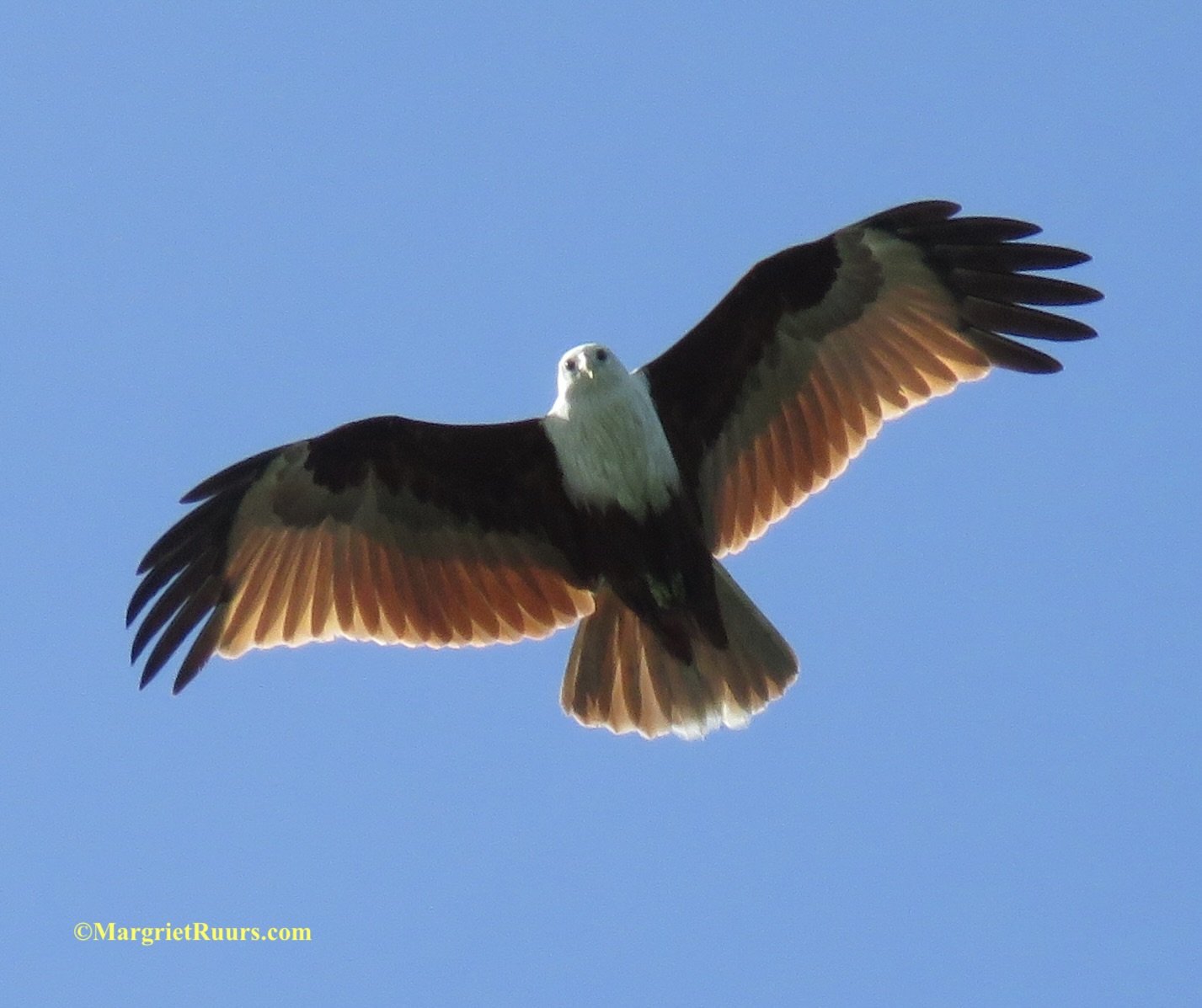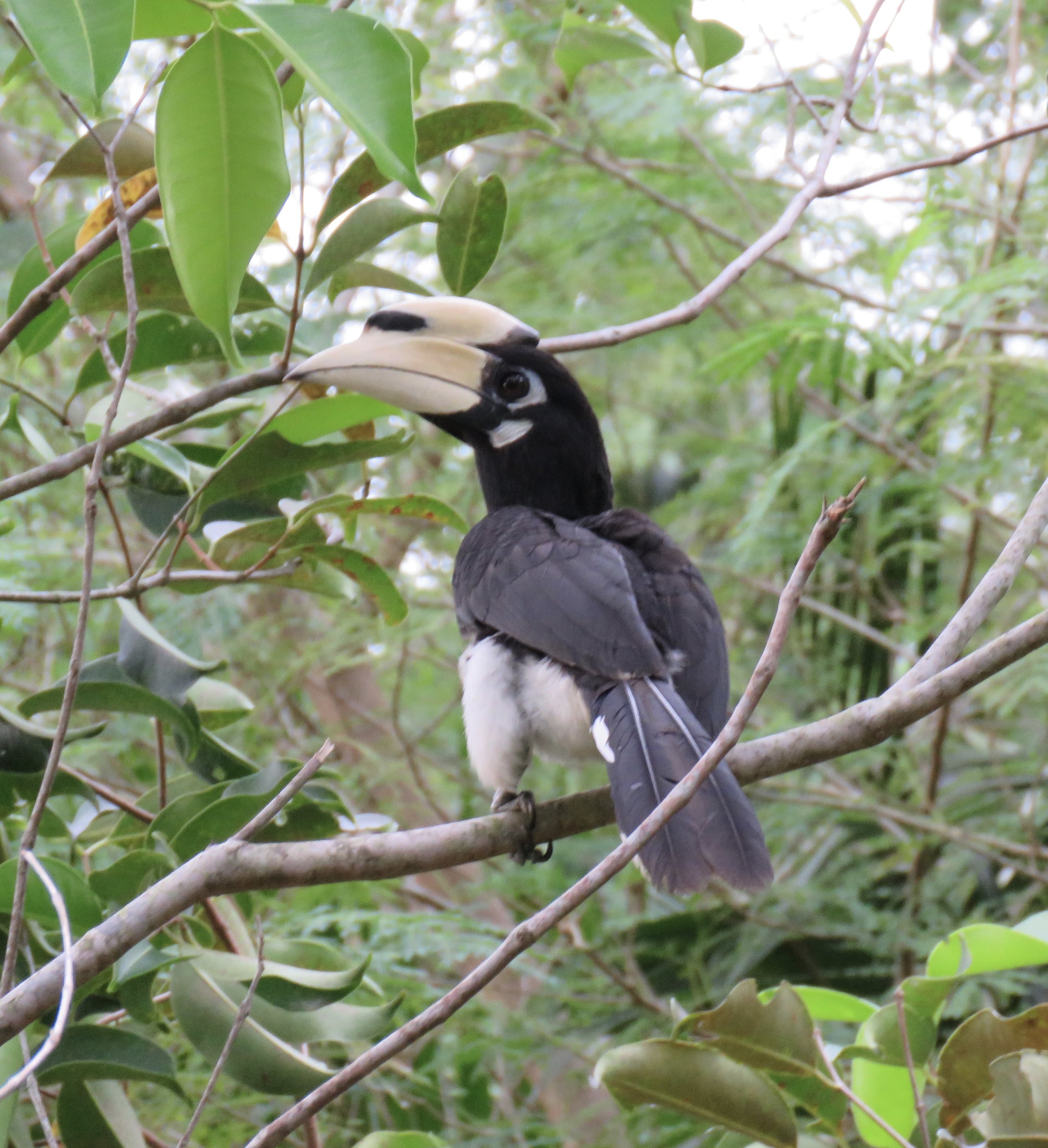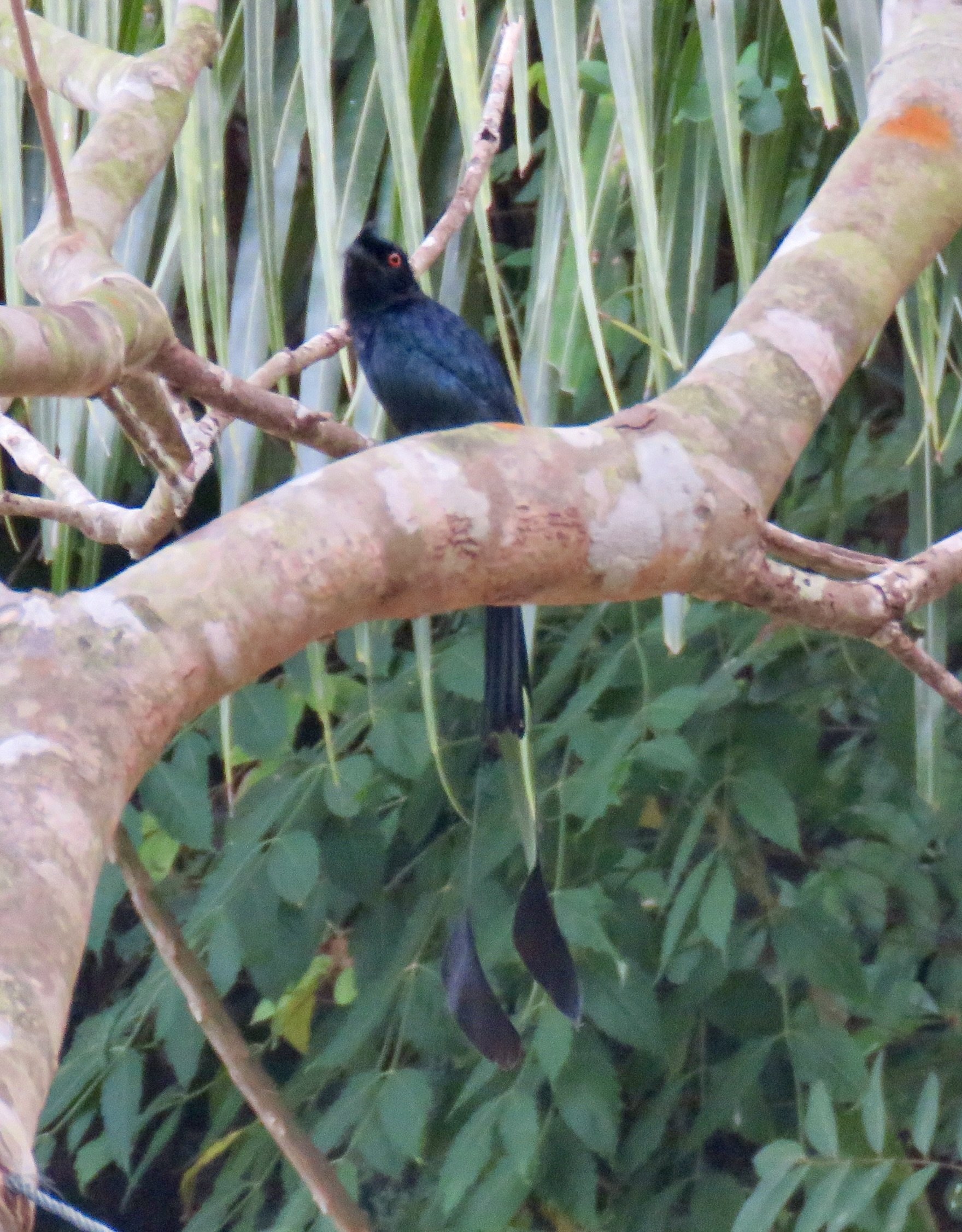‘Langkawi’ means island of the reddish-brown eagle in Malay.
Oh the things you will learn when you have places to go…
Before coming to Malaysia I did not know what a Brahminy Kite was and I’d never seen a drongo. I’d never even heard of nightjars. Have you?
But now I do…
White-bellied Sea Eagle. Not sea gull…
I’m not a true birdwatcher - or a twitcher as they are called in Britain. Real birdwatching would make me twitchy, I think. The patience you need to spot something as fleeting as a bird…
I can’t tell the difference between a dove and a pigeon, nor that between a white heron and an egret. They all look the same to me.
But I do find birds fascinating and exciting to see. And slowly, I’m able identify more of them by sight or sound. And the sounds here are amazing!
Birds at home start delicately at dawn. We sometimes wake up to gentle songs and chirps, pretty whistles and warbles of lovely, civilized birds.
In our palapa in the jungle of Malaysia, we are rudely awoken, just before dawn every day, by a loud cacophony of shrieks and screeches. Some mornings it starts in the distance but rapidly comes closer. First there is the very loud, insistent hammering of the longtailed nightjar.
Not my photo of a nightjar… I can’t even see him in the picture…
‘The what?’ you may ask…
The nightjar is a crumpled looking bird, a bit of a cross between a small owl and a cuckoo. It nests on the ground among brown leafs and is virtually impossible to spot. Perhaps to make up for its looks, it makes sure you can’t miss its call. I don’t know how this bird produces such a sound. It is identical to hammering on hollow stone. Hence its local name… ‘the gravedigger’ bird. And once you’ve heard that, you can only picture it in the dark dusk, when your brain is groggily waking up to this noise, as hammering on a gravestone…
The hammering is soon joined by loud whistling. Not a normal bird whistle but the loud, repetitive whistle of big fat, wet lips from someone who can’t really whistle. This whistling gets louder and faster, with the tone of a petulant teenager who wants to get his way. This is the Asian Koel. He was cool at first, but now he is wearing his welcome thin around our little piece of jungle. All of these early morning birds make sure we don’t get to sleep in. And we can’t go to sleep early either because that’s when the lapwings party in the trees around us. Their screeching would scare even the gravedigger…
Brahmini Kite, Malaysia
At some point a police siren goes off. I mean, it’s a bird but identical to a siren. I still don’t know which bird this is but he’s loud. Underneath and above all the racket made by this motley crew of hammers, drillers, whistlers and sirens, is an insistent high pitched electrical buzz. It starts softly, slowly but builds up into a feverish mechanical pitch. These are the cicadas. And they never stop. They make me want to spray the bushes with WD-40 in hopes of fixing their squeak.
Brahminy Kite
The familiar high pitched cry of an eagle is soon heard in the relative cool of morning, amid the coo-ing of doves and the thrills of countless other birds, all woken up by the hammering gravedigger.
The brown and white Langkawi eagles fish on our beach. We watch them dive for fish to gether with the Brahminy Kite. They do look like kites, when they sail over the waves.
Hornbill
Then from stage-left, the hornbills make their entrance to center stage. These large birds sail on the air and seem like graceful, large kites as well - until they come in for a crash landing. They blunder into a tree, ruffling the leaves, sometimes cracking small branches. It they’re lucky, they’ll hang on to their branch but they often seem to topple over and cover up a fall by flapping their giant wings as if they meant to fly off again. Then they sit there, with a goofy grin on their double-decker beaks and eyes that seem to look in two directions at once. Their raucous calls make sure you can’t miss who’s crashing about in the greenery. It makes me wonder why you can buy soundtracks of “soothing jungle sounds…”
There are screeching lapwings who make so much noise that I keep going outside to see who is getting killed…
Drongo: note his two extra long tail feathers…
They’re not all that loud and big though. The most gracious one is the drongo. This is not an instrument. A drongo is a lovely, elegantly shaped bird. Bluish black. Its tail is forked. And some drongos have these long peacock-like feathers with a blue butterfly at the end. I don’t know how they don’t get them caught when they fly off… these long things dangle a foot or some behind them. Just one long, extra tail feather on each side. Since I’m not a real birdwatcher, I can’t tell you if this is the Greater Racket-Tailed Drongo or the Lesser Racket-Tailed Drongo, but they look lovely and don’t make such gawdawful noise…
Oriole
I have an App on my phone called Merlin. It identifies birds by sound for you and works great in North America. In Malaysia is it as dumbfounded as I am…
Another more civilized singer with a pretty, melodious call is the Black-naped Oriole. They fly through the air like oversized lemons: bright yellow. I enjoy hearing its lovely warbling in the bushes.
But perhaps the loveliest one of them all is the kingfisher who frequents our lawn. I think this is the white-throated kingfisher. But whatever real twitchers call him, he’s lovely and elegant, and colourful and - most of the time - he doesn’t make a peep.
Kingfisher
The pamphlet in our house shows fascinating birds I have not yet spotted: the scaly breasted munia and the tit babbler. I wonder what they look like. I guess I’ll have to keep on twitching.
RESOURCES:
Merlin Bird App: https://merlin.allaboutbirds.org/
Listen here to a…
https://www.malaysia-wildlife-and-nature.com/malaysian-birds-gallery.html
